I’d done the two English sections of the Via Francigena, an ancient pilgrimage route that runs from Canterbury to Rome. Since I wasn’t quite ready to continue across to France, I had to find a new challenge. The answer came to me in the form of the North Downs Way, a route that runs from Farnham in the west to Canterbury before looping through Dover and is supposed to follow the same route pilgrims would have taken to visit the shrine of Thomas Becket. Since it shares the path of the Via Francigena from Canterbury to Dover, I’d already unwittingly done a small part of it.

So why not continue? The 19km stretch from Dover to Etchinghill along the cliffs looked like it might be interesting, although I decided to end my walk in the slightly closer town of Folkestone instead since it had a convenient bus service back home.
The start of my journey lay on the Western Heights, whose Drop Redoubt fortress I’d already explored. But that was by far not the only interesting feature of this hill. Further along the cliff lies St Martin’s Battery, built between 1871 and 1874 overlooking Dover’s western harbour and updated during World War II. I poked around the long row of emplacement buildings for a while, but apparently completely missed the entrance to the underground deep shelter!
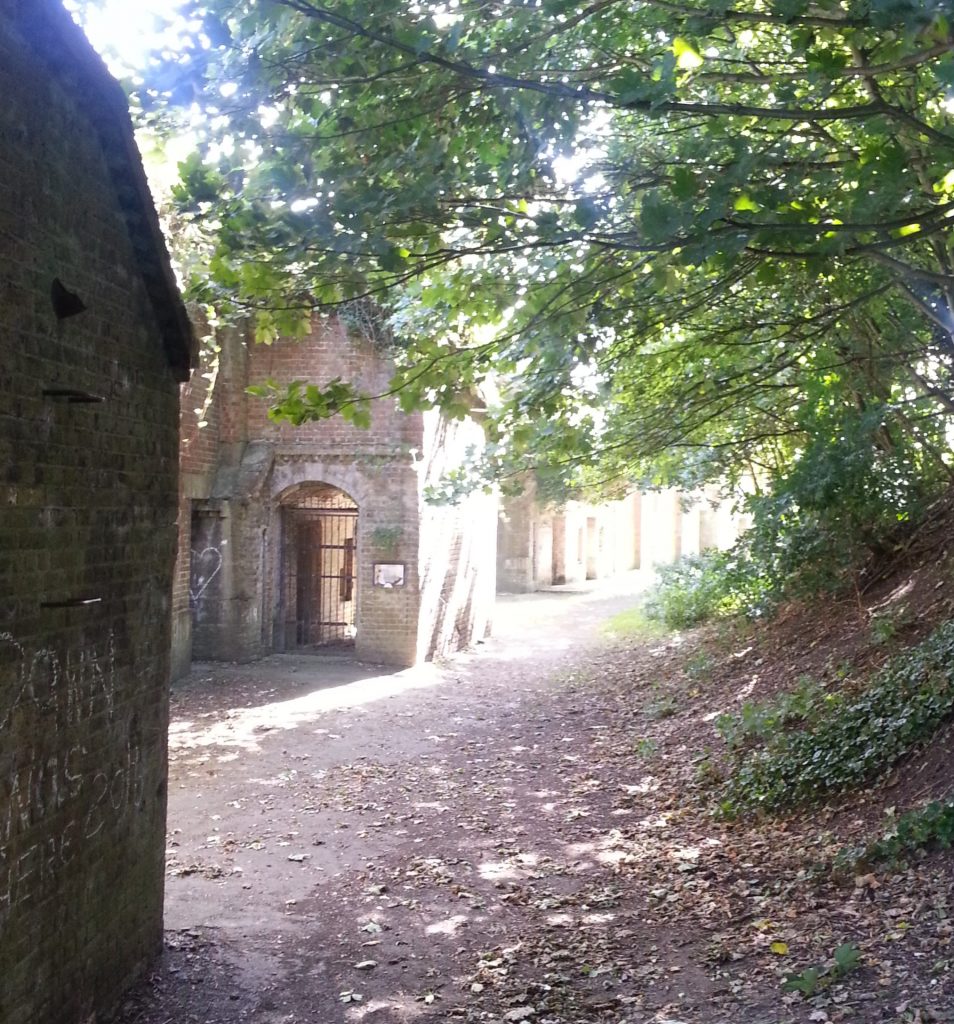
Passing out into the car park I found my first sign post for the North Downs Way, directing me further up the hill. Here the Way passes the excavated foundation of a small 12th-century church. The keyhole-shaped footprint of the building is typical of the Knights Templar, an order set up to protect important religious places in the Holy Land and the pilgrims who visited them. It would be appropriate for them to have a place in Dover, the most common point for pilgrims to cross the Channel to the continent.
However, the link to the Knights Templar is not proven, and it could be that this was simply a wayside shrine for travellers between Dover and Folkestone. Either way, it seemed appropriate for me to pause a moment.

Continuing over the hill, I caught my first glimpse of Shakespeare Cliff, named for a scene in King Lear said to be inspired by Dover’s white cliffs. The hazy day lent an ethereal tint to the view, allowing me almost to believe that I really was in a Shakespearean story.

I headed down under the main road that runs between Dover and Folkestone, before heading up the narrow path that leads up to Shakespeare Cliff, festooned with white-flowering vines. The path took me above the Dover to Folkestone railway line, recently repaired after 250 metres of it collapsed due to storm damage on Christmas Eve 2015.
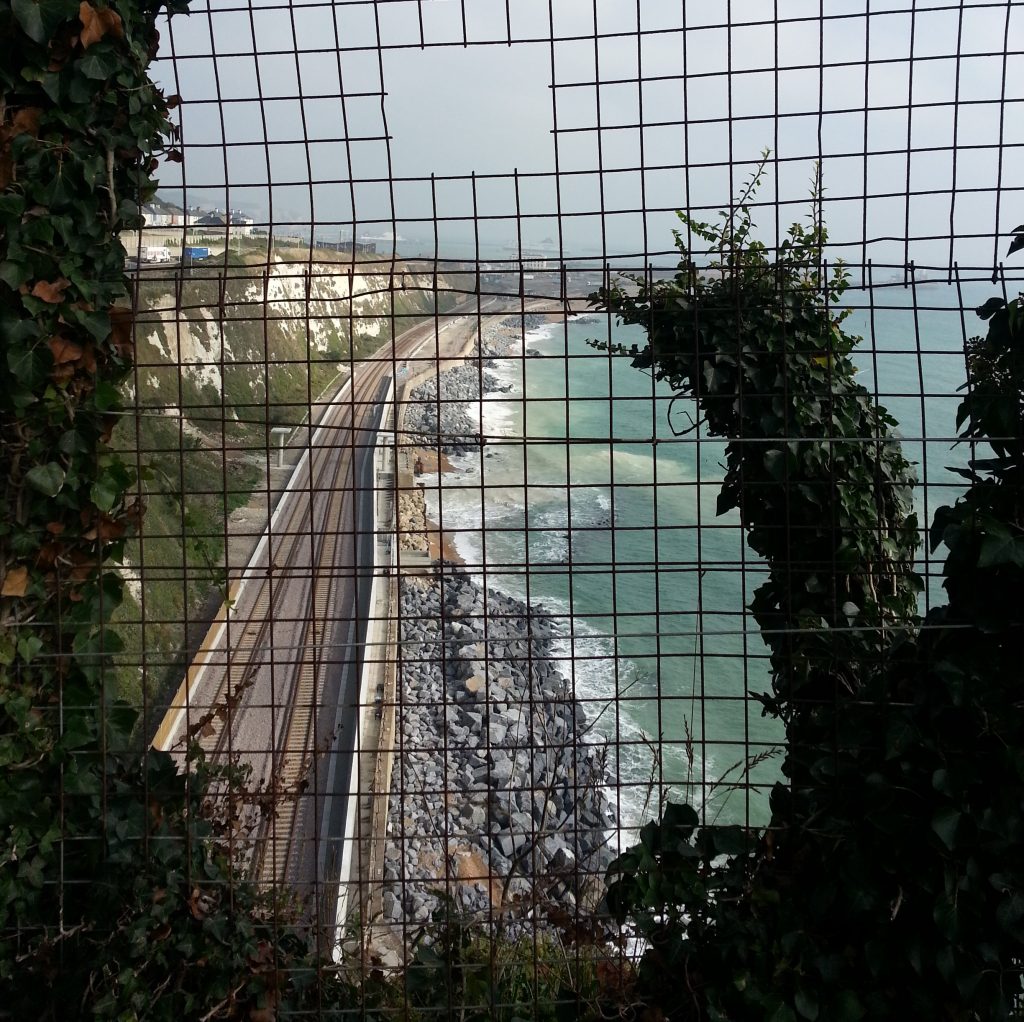
In the murky distance I could see Dover harbour and the white cliffs beyond. Continuing, I found myself following a path along the very edge of the famous white cliffs, hoping today was not the day for a landslide.
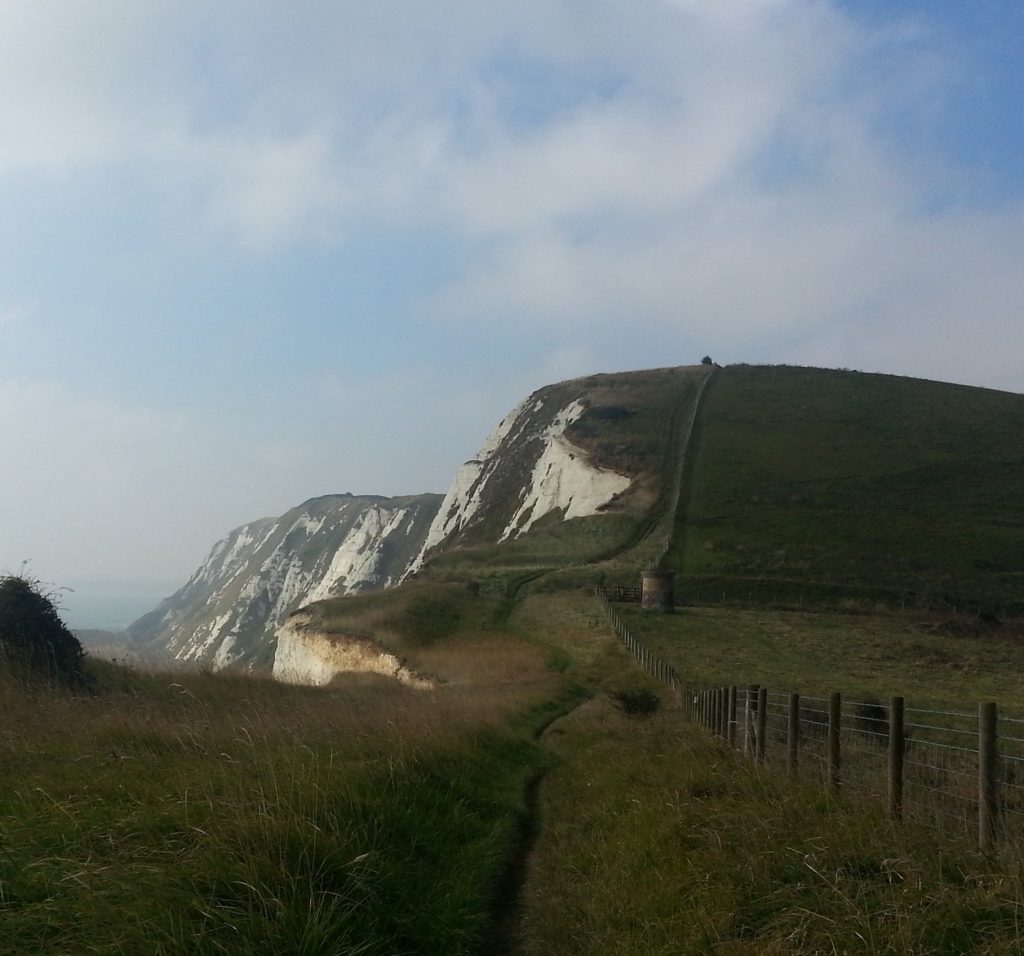
Along this cliff I also noticed a long line of squat thick chimney-like structures, which the locals of the Dover History Facebook page helpfully informed me were old steam vents for the tunnel that runs beneath, built in the 1840s through soft and treacherous chalk stone.
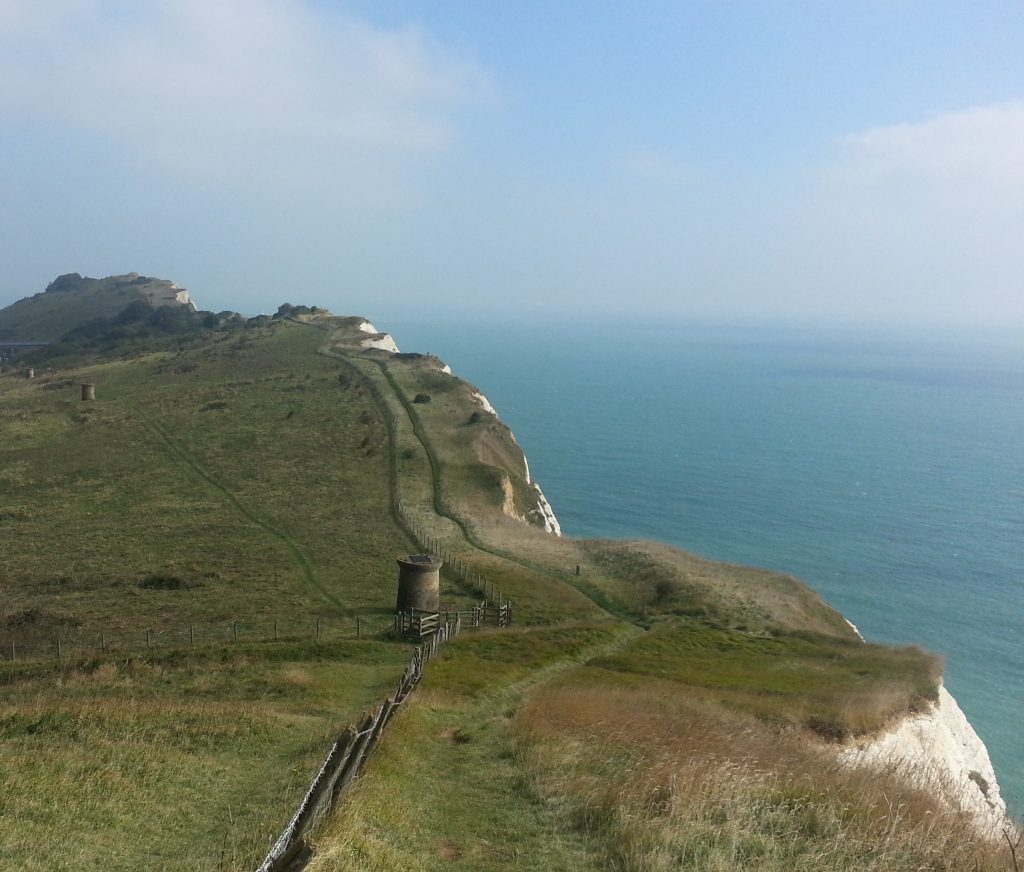
Continuing along the cliff top, I passed some more fortifications overlooking the Channel and eventually decided to rest myself on the grassy roof of one of these structures. Due to the haziness of the day I could not see France beyond, so I wouldn’t be much use to spot an approaching invader. If only I had a sound mirror like the ones east of Dover I could perhaps do more good.
On the other hand I had a clear view down to Samphire Hoe, the artificial coastal plateau created from the 4.9 million cubic metres of detritus unearthed during the construction of the Channel Tunnel (gotta put it somewhere I guess!). The name refers to the plant samphire, mentioned in the famous King Lear scene which speaks of the poor samphire gatherers hanging precariously from the cliff in the course of their perilous work. The plant was once a popular vegetable. Hoe of course means “a piece of land jutting out into the sea” – could it possibly mean anything else?

Rest over, I continued and found exactly what I’d been wishing for. Proud atop the cliff stood a huge sound mirror, and I figured I might as well take another break in front of it as I tried to hear what was going on in the Channel. It seemed that either I was doing it wrong or nothing was out there, as no matter where I stood I couldn’t hear a thing.
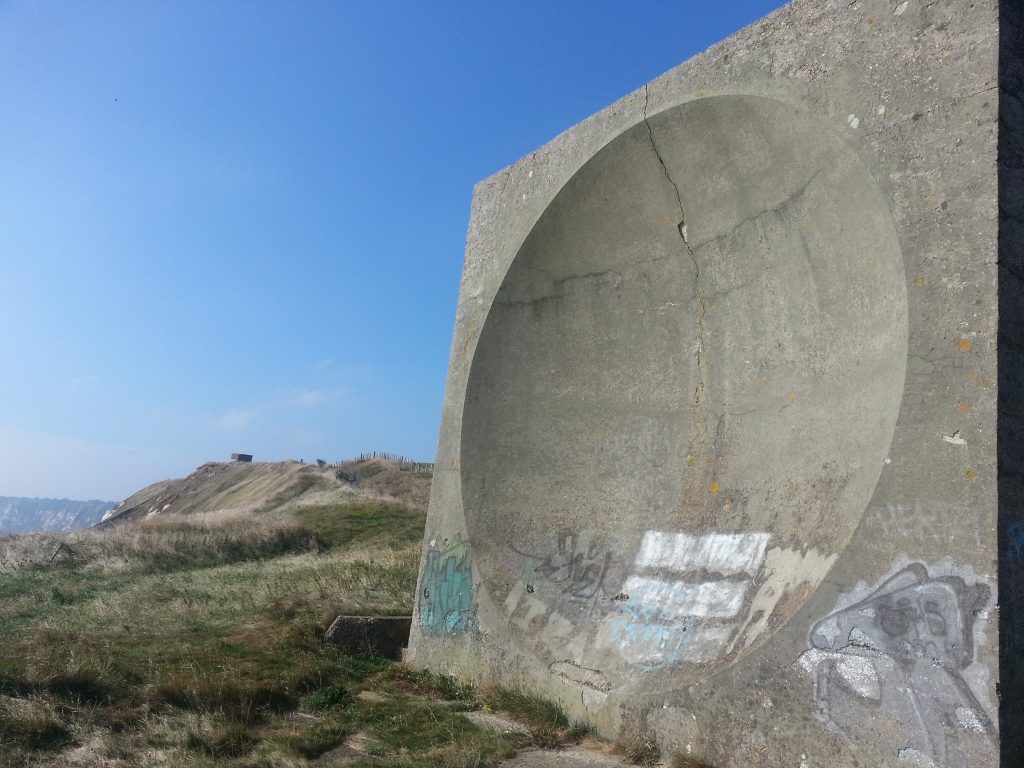
I gave up and moved on, shortly afterwards receiving my first faint glimpse of Folkestone. Prominent in the skyline is the Grand Burstin Hotel, which is apparently still a working hotel despite looking more like a great place to get murdered.
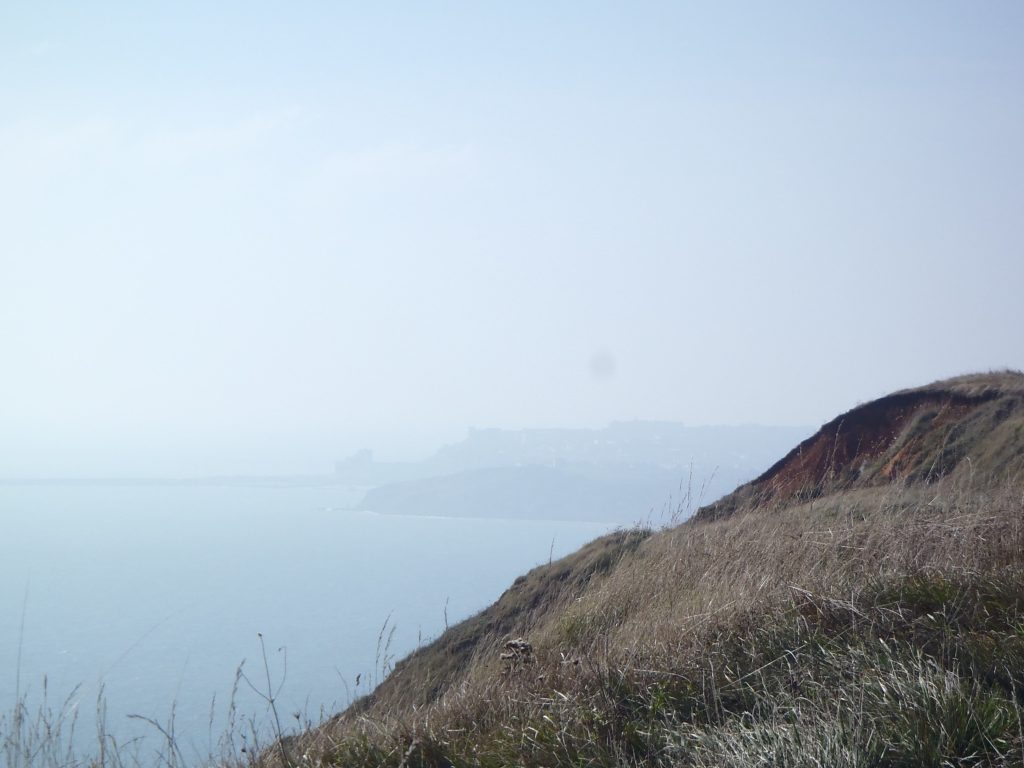
Refreshed by the sight of my destination, I walked onwards with renewed vigour, over the section of the Dover to Folkestone rail route known as “The Warrens”, a treacherous mass of soft stone that presented great difficulty to the 19th century rail engineers.

To my surprise I suddenly found myself in an open grassy field. I have to praise the designers of this route as they have taken pains to bring the traveller to a wide variety of sites of interest, and in this case I had been led straight to the Battle of Britain Memorial. This battle is legendary in the heroic annals of the Second World War, perhaps Germany’s first major defeat and the turning point of the conflict. And it all hinged on only 3000 pilots, called by Winston Churchill “The Few”.

At the centre of the field is a statue of a seated airman, staring thoughtfully across the channel – his calm visage contrasting strongly with the nickname this area earned during the war: Hellfire Corner. His jacket obscures his rank and nationality, reflecting the diverse origins of the airmen who fought this famed battle.
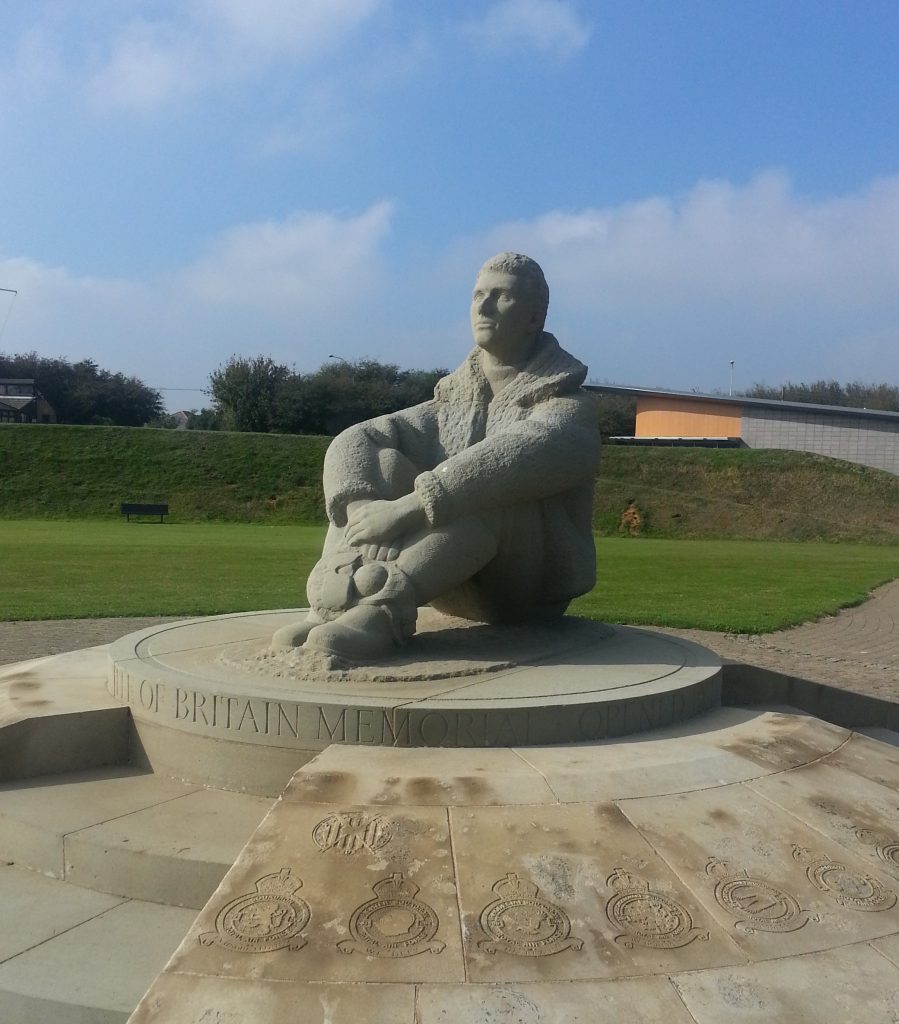
After saluting the brave few and inspecting the replica aircraft nearby, I plunged once again on to the path of my pilgrimage. Nearing Folkestone, I found myself in bushy alleys between backyards and began to plan my diversion from the route into Folkestone (before I found myself taking an unwilling detour to Etchinghill!).
I managed to find a byway which took me in to the outer suburbs of Folkestone, and since I’d begun to feel the long walk in my tender feet I took a convenient seat in a nearby bus stop. At that moment the bus into the centre of town arrived and pulled in for me – and I hope my loyal readers understand that politeness simply demanded I step on board. You know I would never willingly cheat my way out of a walk.
Folkestone is a trendy little seaside resort notwithstanding the creeptacular hotel, but what I really wanted was to sample some of its famed locally-caught seafood, so I headed to the seafront area. I found The SmokeHouse and settled on a fairly pricey box of cod and chips. However the fish was enormous, juicy and beautifully battered, so the price seemed justified.
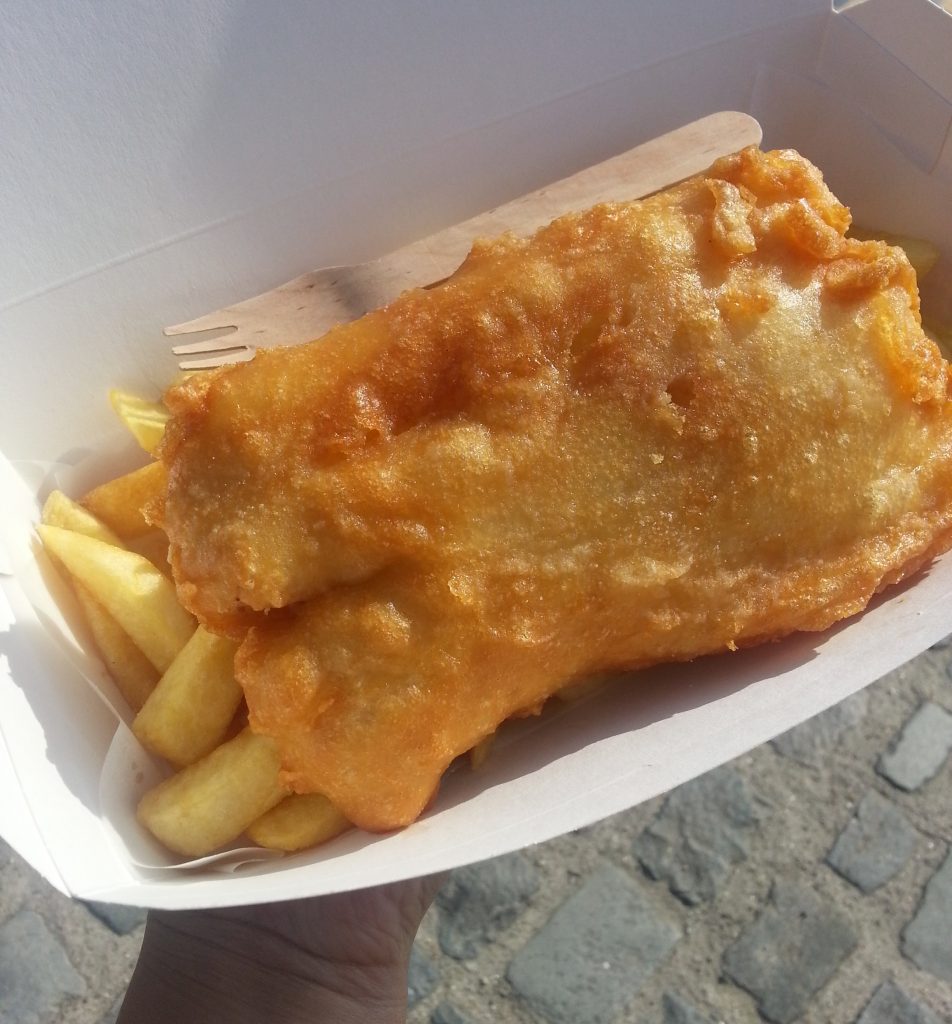
I found a place to sit along the end of the boulevard and chowed down on my reward while watching the sea. I then had only one task remaining – to seek out a shore front seafood stall and pick up some fresh seafood to bring home for tea. From Bob’s Seafood I managed to acquire a lobster tail, a tub of whelks and a tub of cockles from the assortment provided, which I would later consume with a generous helping of vinegar.

Then it was time to put my feet up as the bus took me back in 25 minutes what I’d taken three hours to walk. Still, you don’t see white cliffs and sound mirrors and fortifications from the bus, so I consider my time well spent!
References:
The Western Heights – St Martin’s Battery
History of Knights Templar Church
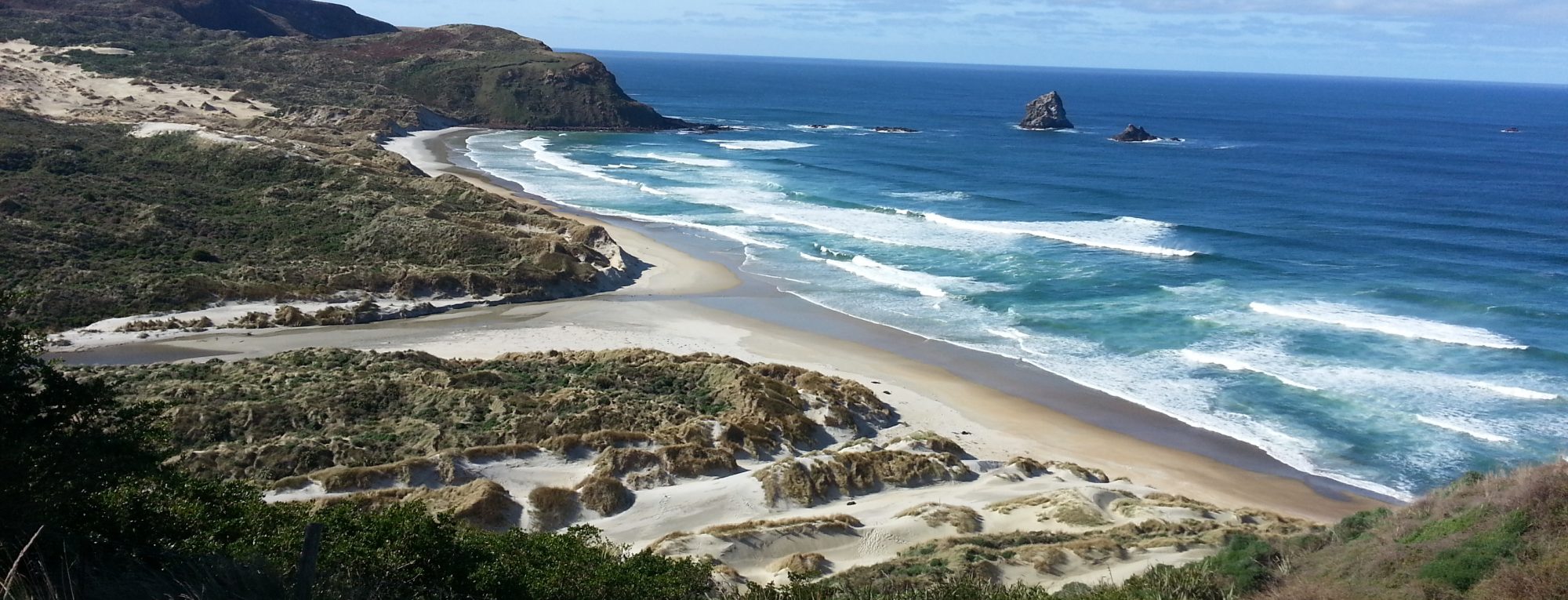


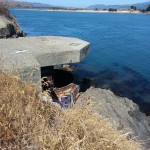
Another well written adventure….but no photo of the creepy Hotel?
An epic walk. Well done!